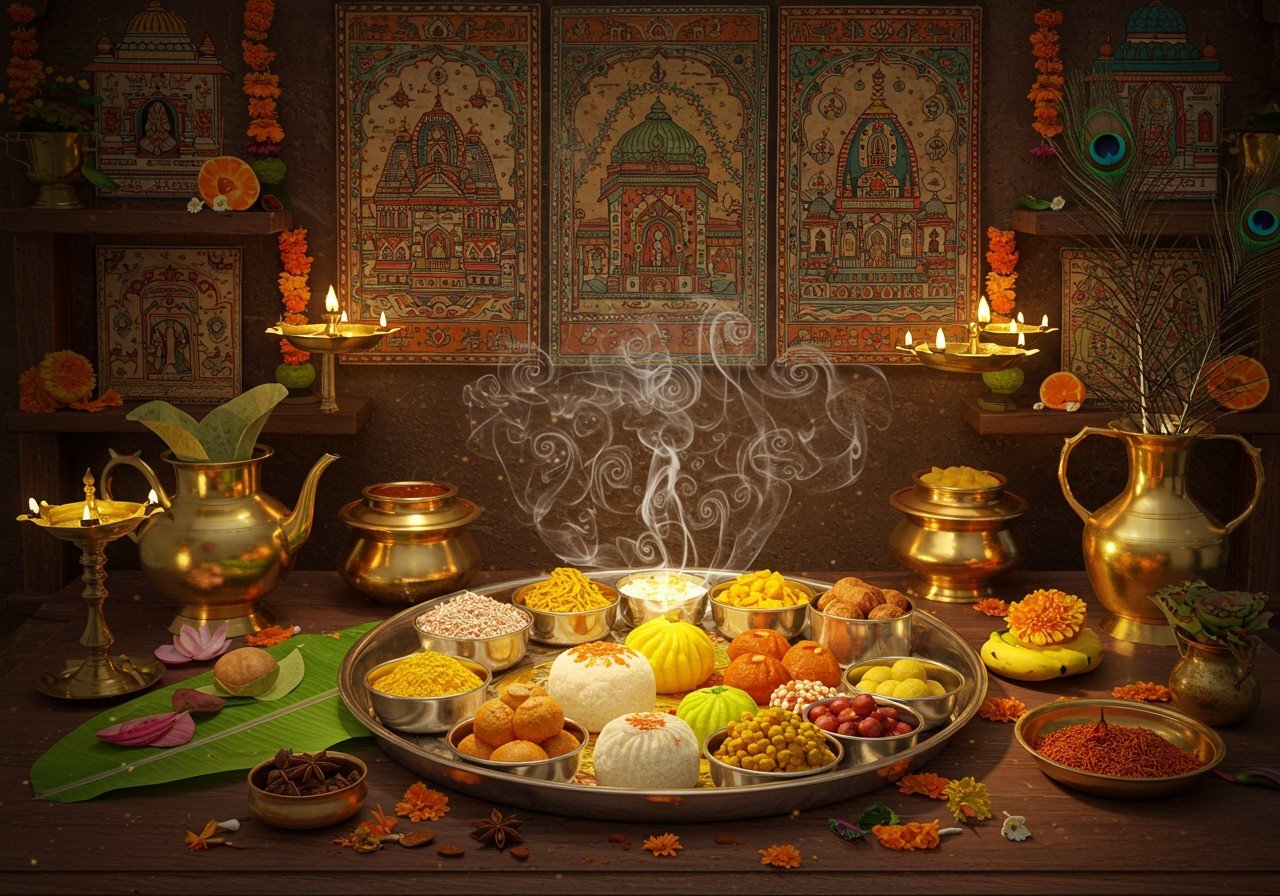
India’s rich spiritual heritage is beautifully intertwined with its culinary traditions, and nowhere is this more evident than in the sacred food offered in temples, known as Prasada or Naivedyam. This blessed food, first offered to the deities and then shared with devotees, is more than just sustenance; it’s a symbol of divine grace, a taste of tradition, and a connection to the divine.
The Essence of Prasada
Prasada, meaning “grace,” embodies the divine blessings bestowed upon devotees. Its preparation and consumption are acts of devotion, connecting individuals to the spiritual realm. This tradition emphasizes purity, both in the ingredients and the process, reflecting the sanctity of the offering.
Across India, the making of prasada is a meticulous process, often following age-old recipes passed down through generations. Fresh, locally sourced ingredients are preferred, and the food is prepared with utmost care and reverence, often without onion or garlic, adhering to sattvic principles of purity and wholesomeness.
The first portion is always offered to the deity, imbuing it with divine energy, before being distributed among devotees as a symbol of blessings and communal unity.
A Symphony of Flavors: Regional Prasada Specialties
India’s diverse culinary landscape is mirrored in the variety of Prasada offered across its temples. Each region boasts its unique specialties, a testament to the country’s rich cultural tapestry.
South Indian Delights
-
Rice Dishes: South Indian temples are known for their flavorful rice preparations. From the tangy Tamarind Rice (Puliyogare/Pulihora) to the simple yet satisfying Lemon Rice (Chitranna), the comforting Coconut Rice (Thenga Sadham), and the cooling Curd Rice (Daddojanam/Thayir Sadam), each dish offers a unique taste of South Indian devotion.
-
Pongal: A staple in South Indian temples, Pongal comes in two main varieties: the sweet Sakkara Pongal, made with jaggery and ghee, and the savory Ven Pongal, similar to Khichdi. Both are offered as a symbol of abundance and prosperity.
-
Other Specialties: From the spiced chickpea dish Sundal to the refreshing lentil salad Kosambari, the unique Panchamirtham (a sweet jam) from Palani Murugan Temple, and the creamy Payasam, South Indian Prasada offers a diverse range of flavors and textures. You can find high-quality ingredients for these dishes, like green mung dal and other holy foods at poojn.in.
North Indian Offerings
-
Comforting Classics: North Indian temples offer familiar dishes like Khichdi, Poori with Aloo Sabzi, and various Halwas. These wholesome meals are often served during festivals and special occasions.
-
Rich and Flavorful: From Kadha Prasad (a whole wheat flour halva) to hearty dishes like Rajma (kidney beans), Chole (chickpea curry), and the creamy Dal Makhani, North Indian Prasada is known for its rich flavors and satisfying textures.
-
Sweet Treats: Indulge in sweet offerings like Malpua with Rabdi and Kheer, adding a touch of sweetness to your spiritual experience.
Bringing the Divine Home: Preparing Prasada
You can experience the blessings of Prasada in your own home. While traditional recipes hold a special significance, the most important ingredient is the devotion and reverence with which you prepare the food. Using pure ingredients and following a clean process adds to the spiritual experience.
Poojn.in makes it easy to bring the authenticity of temple Prasada to your kitchen. We offer a wide selection of pure and high-quality ingredients, from Sarbosadhi and Mahosadhi to premium ghee, dry fruits, spices, and even traditional cookware. We also offer ready-to-use Prasada mixes for added convenience. Explore our collection of jaribooti, jaifal, and other essential ingredients for your puja needs.
Our commitment to quality and authenticity ensures that you have everything you need to create sacred offerings in your home. Visit Poojn.in today and embark on your divine culinary journey.
Frequently Asked Questions
What is the significance of Prasada? Prasada is not merely food; it is a sacred offering imbued with divine blessings. It symbolizes the grace of the deity and is believed to bring spiritual upliftment to those who consume it.
How can I prepare Prasada at home? Preparing Prasada at home begins with a clean heart and pure ingredients. Follow traditional recipes or simple offerings of fruits and sweets, focusing on the devotion and intention behind the preparation. Poojn.in offers a wide range of ingredients and supplies to help you create authentic Prasada at home.
Are there different types of Prasada across India? Absolutely! India’s regional diversity is reflected in the variety of Prasada offerings. From the sweet Pongal of the South to the Kadha Prasad of the North, each region has its own unique specialties, often tied to local customs and traditions.
What is the difference between Prasada and regular food? Prasada is differentiated by its sacred purpose. It is specifically prepared and offered to the deity with devotion, making it distinct from everyday meals. This ritual transforms ordinary food into a blessed offering.


